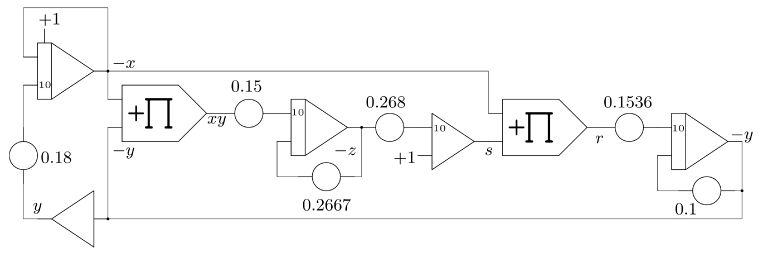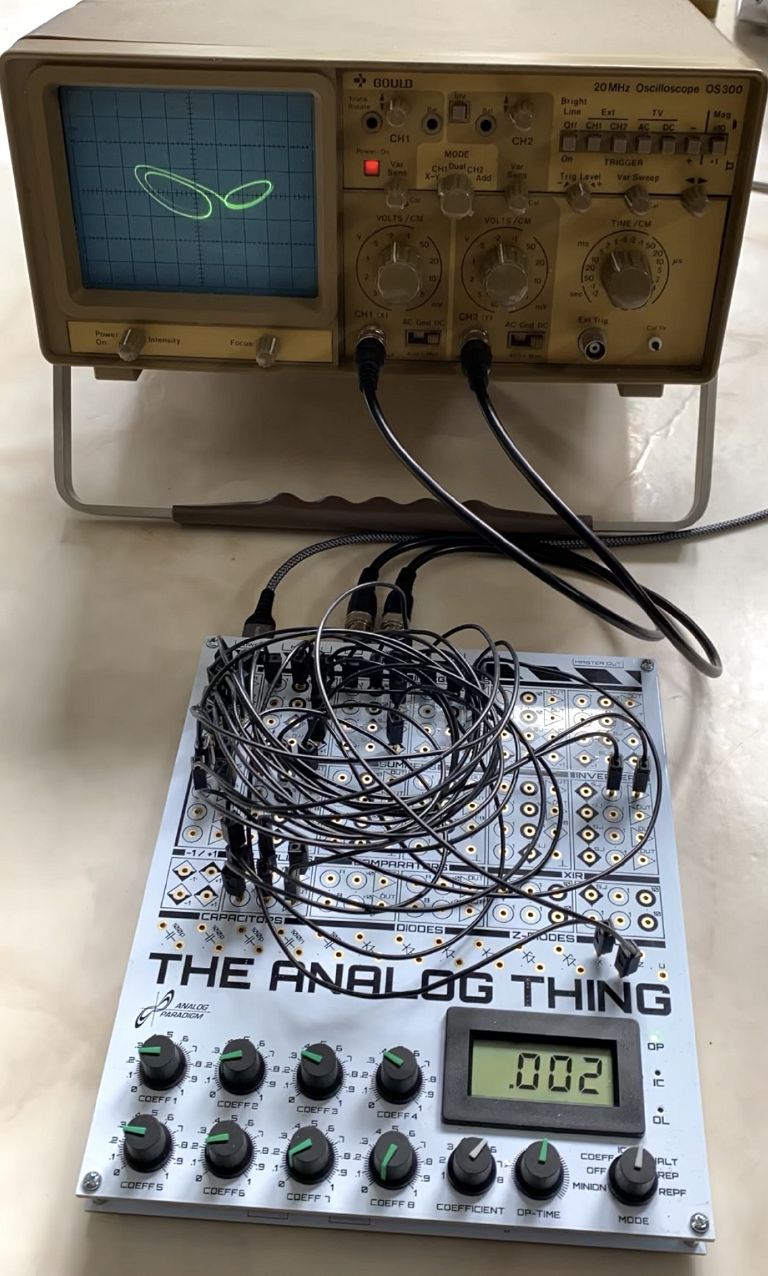Difference between revisions of "Lorenz"
| Line 23: | Line 23: | ||
These equations can now be implemented directly on an analog computer as shown in this program: | These equations can now be implemented directly on an analog computer as shown in this program: | ||
| + | |||
[[File:lorenz_program.jpg|768px]] | [[File:lorenz_program.jpg|768px]] | ||
A typical setup looks like this: | A typical setup looks like this: | ||
| + | |||
[[File:lorenz_THAT_setup.jpg|768px]] | [[File:lorenz_THAT_setup.jpg|768px]] | ||
Revision as of 11:48, 1 September 2021
In 1963 Edward Norton Lorenz (23.05.1917 - 16.04.2008) developed a model for atmospheric convection (see https://journals.ametsoc.org/view/journals/atsc/20/2/1520-0469_1963_020_0130_dnf_2_0_co_2.xml and https://www.math.uni-hamburg.de/home/lauterbach/scripts/seminar03/prill.pdf for more details). This model, which was simulated on a tiny digital computer (Royal McBee LPG-30), showed an interesting behaviour which gave rise to research on chaotic attractors.
The system itself is described by three couple differential equations (x' denotes the first derivative of x with respect to time here - more typically it would be written with a dot over the variable name):
x'=σ(y-x)
y'=x(ρ-z)-y
z'=xy-βz
In the original system the parameters are σ=10, β=8/3, and ρ=28. Obviously, this cannot be implemented on an analog computer directly as it is not scaled to the interval [-1,1]. Scaling this system is a bit cumbersome: First, the domains of all involved variables have to be determined. Scaling and rewriting the system yields the following set of equations:
x=∫1.8y-x dt+C
s=1-2.678z
y=∫1.5556xs-0.1y dt
z=∫1.5xy-0.2667z dt
The constant C basically represents the initial condition of that integrator and is not critical. Since each integrator and summer performs an implicit change of sign in an analog computer such as THAT the above equations can be simplified a bit:
-x=-∫1.8y-x dt+C
-z=-∫1.5xy-0.2667z dt
s=-(1-2.68z)
r=-xs
-y=-∫1.536r-0.1y dt
These equations can now be implemented directly on an analog computer as shown in this program:
A typical setup looks like this:

